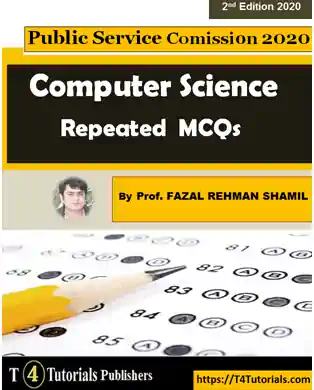What is the primary function of a multiplexer (MUX) in digital circuits?
A) Combine multiple signals into one
B) Split a signal into multiple outputs
C) Perform arithmetic operations
D) Store data temporarily
Answer: A
What is the primary function of a demultiplexer (DEMUX) in digital circuits?
A) Combine multiple signals into one
B) Split a signal into multiple outputs
C) Perform arithmetic operations
D) Store data temporarily
Answer: B
Which of the following statements about multiplexers is true?
A) They have one input and multiple outputs.
B) They have multiple inputs and one output.
C) They perform logical operations.
D) They store data for later use.
Answer: B
Which of the following statements about demultiplexers is true?
A) They have one input and multiple outputs.
B) They have multiple inputs and one output.
C) They perform logical operations.
D) They store data for later use.
Answer: A
What is the primary purpose of a multiplexer with
𝑛
n select lines?
A) To select one of
𝑛
n input signals to be routed to the output
B) To combine
𝑛
n input signals into one output
C) To perform
𝑛
n logical operations simultaneously
D) To store
𝑛
n bits of data temporarily
Answer: A
What is the primary purpose of a demultiplexer with
𝑛
n select lines?
A) To select one of
𝑛
n output signals from the input
B) To split the input signal into
𝑛
n outputs
C) To perform
𝑛
n logical operations simultaneously
D) To store
𝑛
n bits of data temporarily
Answer: B
Which gate is commonly used internally in multiplexers?
A) XOR gate
B) AND gate
C) OR gate
D) NAND gate
Answer: B
Which gate is commonly used internally in demultiplexers?
A) XOR gate
B) AND gate
C) OR gate
D) NAND gate
Answer: B
What is the minimum number of select lines required for an 8-to-1 multiplexer?
A) 2
B) 3
C) 4
D) 8
Answer: B
What is the minimum number of select lines required for a 1-to-8 demultiplexer?
A) 2
B) 3
C) 4
D) 8
Answer: B
Which of the following is a characteristic of multiplexers?
A) They reduce the number of inputs.
B) They increase the number of outputs.
C) They are used for parallel-to-serial conversion.
D) They perform logical operations.
Answer: C
Which of the following is a characteristic of demultiplexers?
A) They reduce the number of inputs.
B) They increase the number of outputs.
C) They are used for serial-to-parallel conversion.
D) They perform logical operations.
Answer: C
In a 4-to-1 multiplexer, how many data input lines are there?
A) 1
B) 2
C) 4
D) 8
Answer: C
In a 1-to-4 demultiplexer, how many output lines are there?
A) 1
B) 2
C) 4
D) 8
Answer: C
Which gate is used for selecting the input lines in a multiplexer?
A) XOR gate
B) AND gate
C) OR gate
D) NAND gate
Answer: B
Which gate is used for selecting the output lines in a demultiplexer?
A) XOR gate
B) AND gate
C) OR gate
D) NAND gate
Answer: B
MCQs of Digital Logic Design (DLD)
Introduction to Digital Systems
- Analog vs. Digital signals MCQs
- Binary numbers and arithmetic MCQs
- Logic levels and noise margins MCQs
Boolean Algebra
- Basic logic operations (AND, OR, NOT) MCQ
- Laws and theorems of Boolean algebra MCQ
- De Morgan’s Theorems MCQ
- Canonical forms (Sum of Products, Product of Sums) MCQ
- Simplification techniques (Karnaugh Maps, Quine-McCluskey method) MCQ
Combinational Logic
Logic Gates
Combinational Circuits
- Design and analysis of combinational circuits MCQ
- Multiplexers and Demultiplexers MCQ
- Encoders and Decoders MCQ
- Binary Adders (Half adder, Full adder) MCQ
- Subtractors and Arithmetic Logic Units (ALU) MCQ
- Comparators MCQ in DLD
Sequential Logic
Flip-Flops and Latches
- SR Latch, D Latch MCQ
- Flip-Flops (SR, D, JK, T) MCQ
- Characteristic equations and excitation tables MCQ
- Edge-triggered vs. level-triggered devices MCQ
Counters and Registers
- Synchronous, Asynchronous (ripple), Up/Down counters MCQs
- Shift registers (SIPO, PISO, SISO, PIPO) MCQs
State Machines
Finite State Machines (FSMs)
Memory and Programmable Logic MCQs
Memory Devices
- Read-Only Memory (ROM)
- Random Access Memory (RAM)
- Programmable Logic Devices (PLDs) MCQs
- Field Programmable Gate Arrays (FPGAs) MCQs
More MCQs of Digital Logic Design (DLD)
-
- SET 1: DLD MCQs with answers (dld mcqs with answers)
- SET 2: DLD MCQs (dld basic mcqs)
- SET 3: DLD MCQs (solved mcqs of dld)
- SET 4: DLD MCQs (dld repeated mcqs)
- SET 5: DLD MCQs (dld important mcqs)
- SET 6:DLD MCQs DLD Solved MCQs Answers PDF
MCQs collection of solved and repeated MCQs with answers for the preparation of competitive exams, admission test and job of PPSC, FPSC, UPSC, AP, APPSC, APSC, BPSC, PSC, GOA, GPSC, HPSC, HP, JKPSC, JPSC, KPSC, KERALAPSC, MPPSC, MPSC, MPSCMANIPUR, MPSC, NPSC, OPSC, RPSC, SPSCSKM, TNPSC, TSPSC, TPSC, UPPSC, UKPSC, SPSC, KPPSC, BPSC, AJKPSC ALPSC, NPSC, LPSC, SCPSC, DPSC, DCPSC, PSC, UPSC, WVPSC, PSCW, and WPSC.
